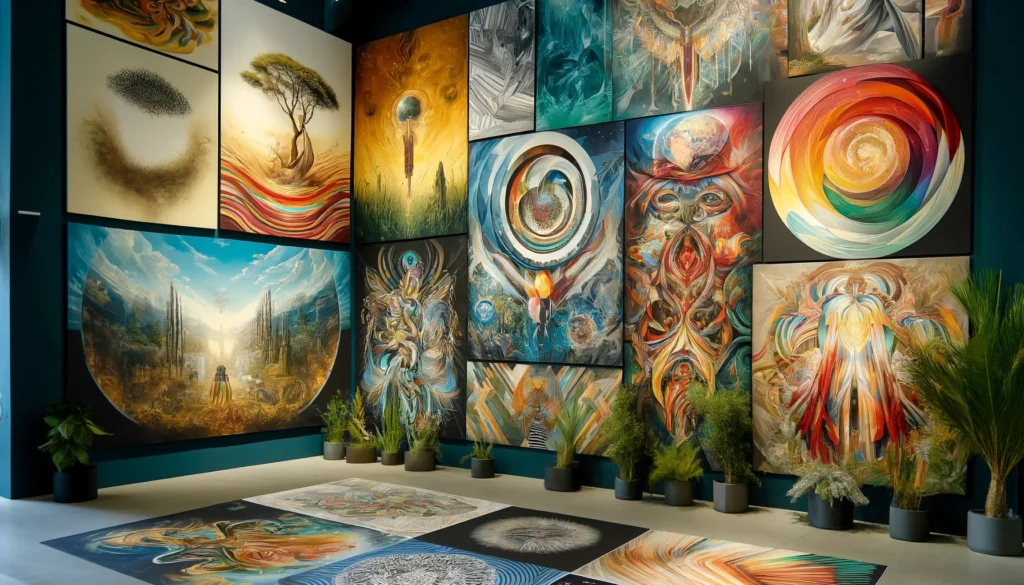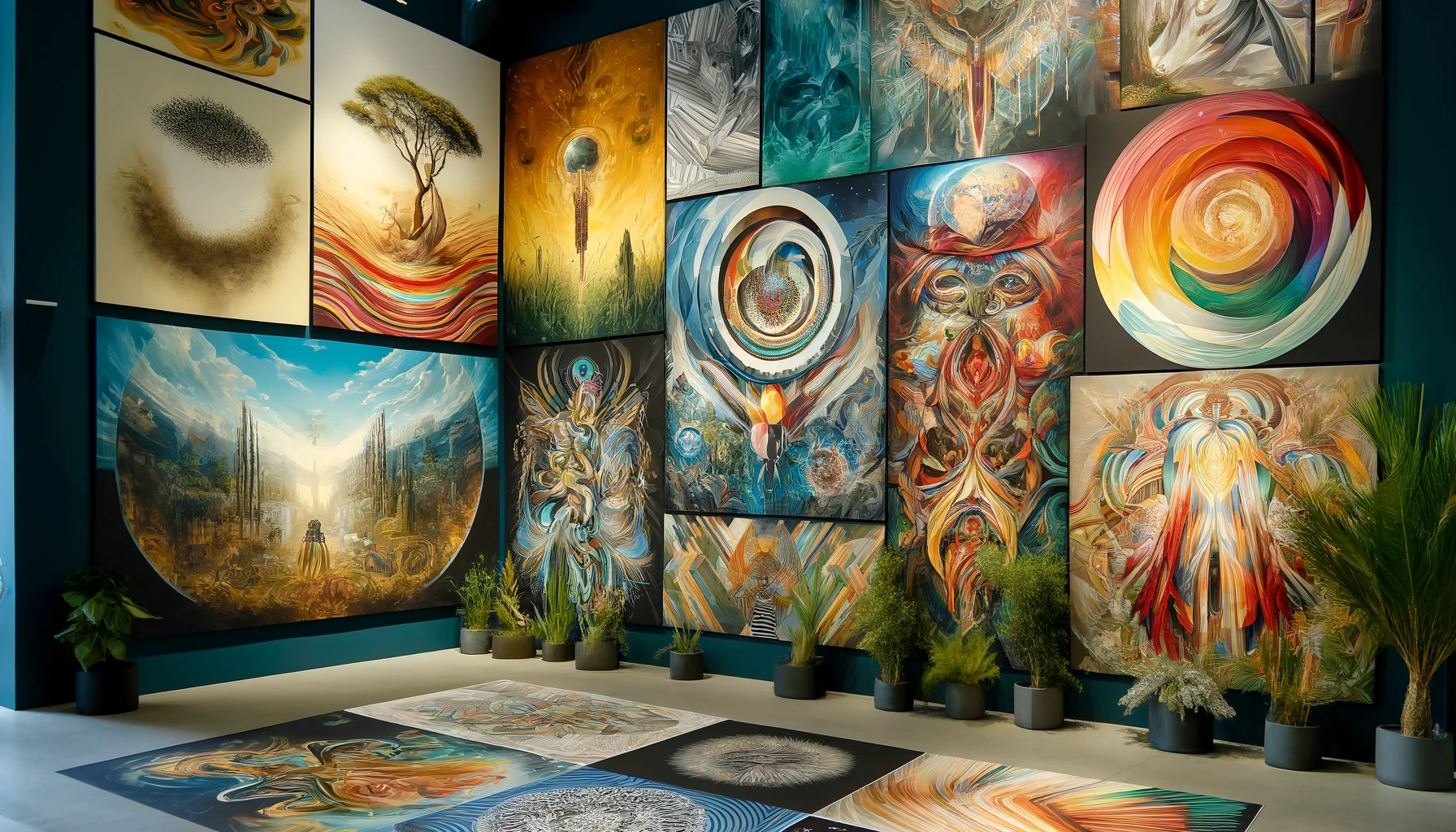Stunning Artwork Designs
When we think of art, we often imagine grand galleries filled with historic masterpieces, but in reality, art is all around us. From the intricate designs on everyday items to the striking murals that adorn urban landscapes, artwork has the power to inspire and captivate. In this blog post, we will explore stunning artwork designs that can serve as a source of inspiration, whether you’re an artist, designer, or simply someone who appreciates beauty. We will delve into various styles, techniques, and examples, providing you with a comprehensive guide to finding and appreciating art that moves you.
The Power of Color and Form
One of the most immediate and powerful elements of any artwork is its use of color and form. Vibrant colors can evoke strong emotions, while the form and structure of a piece can guide the viewer’s eye and convey a sense of movement or stability. For instance, the bold, swirling colors of Vincent van Gogh’s “Starry Night” create a sense of turbulent energy, while the geometric precision of Piet Mondrian’s compositions exudes balance and harmony.
Abstract Art: Freedom of Expression
Abstract art is a perfect example of how form and color can come together to create stunning designs. Unlike representational art, which depicts recognizable subjects, abstract art focuses on shapes, colors, and textures. This freedom from realistic representation allows artists to explore and express emotions and ideas in unique ways. Jackson Pollock’s drip paintings, with their chaotic splashes of paint, might inspire you to experiment with unconventional techniques and embrace the unexpected in your creative process.
Nature as Inspiration
Nature has been a source of inspiration for artists for centuries. The organic forms, intricate patterns, and vibrant colors found in the natural world offer endless possibilities for artistic exploration. Take, for example, the work of Georgia O’Keeffe, who transformed flowers into monumental, abstract shapes that emphasize their inherent beauty and complexity. Whether you’re sketching a landscape or designing a nature-inspired pattern, the natural world can provide a rich tapestry of ideas.
The Influence of Cultural Art
Cultural art, with its unique styles and symbols, offers a wealth of inspiration. From the delicate patterns of Japanese woodblock prints to the bold, intricate designs of African tribal art, each culture brings its perspective and aesthetic principles. Exploring these diverse artistic traditions can broaden your creative horizons and introduce new elements to your work. For instance, the minimalism of Japanese art might inspire you to embrace simplicity and negative space. At the same time, the vibrant patterns of Indian textiles could encourage you to experiment with bold colors and intricate details.
Modern and Contemporary Art
Modern and contemporary art continues to push the boundaries of creativity, offering fresh and innovative designs that challenge traditional notions of art. The works of artists like Yayoi Kusama, with her polka-dot installations, and Banksy, with his provocative street art, demonstrate how contemporary art can be both visually striking and thought-provoking. By studying modern art, you can discover new techniques, materials, and concepts that can inspire your artistic endeavors.
The Role of Technology in Art
In today’s digital age, technology has become an integral part of the artistic process. Digital tools and platforms allow artists to create, share, and collaborate in ways that were previously unimaginable. The rise of digital art, 3D modeling, and virtual reality has opened up new possibilities for artistic expression. For example, the use of digital software can help you experiment with different color palettes and compositions before committing to a final design. Additionally, online galleries and social media platforms provide a global stage for artists to showcase their work and connect with audiences.
Finding Your Unique Style
While it’s important to draw inspiration from various sources, developing your unique style is essential. Your style is what sets your work apart and makes it recognizable. To find your unique voice, try experimenting with different mediums, techniques, and subjects. Keep a sketchbook or visual journal to document your ideas and progress. Over time, you’ll begin to notice patterns and preferences that can guide your artistic journey.

Practical Tips for Staying Inspired
- Visit Art Galleries and Museums: Immersing yourself in a wide range of artworks can spark new ideas and give you a deeper understanding of different styles and techniques.
- Attend Art Workshops and Classes: Learning from other artists and practicing new skills can boost your creativity and confidence.
- Join an Art Community: Whether online or in person, connecting with other artists can provide support, feedback, and inspiration.
- Travel and Explore: Experiencing different cultures and environments can offer fresh perspectives and ideas for your work.
- Keep an Inspiration Folder: Collect images, sketches, and notes that inspire you, and refer to them whenever you need a creative boost.
Conclusion
Art is a boundless source of inspiration, offering endless possibilities for exploration and creativity. Whether the vibrant colors of abstract art inspire you, the intricate patterns of cultural designs, or the innovative approaches of contemporary artists, there’s always something new to discover. By staying curious and open to different styles and techniques, you can continuously fuel your artistic journey and create stunning artwork that resonates with others.
Incorporating these ideas into your creative process can help you develop a rich and varied body of work that reflects your unique vision. Remember, the most important aspect of art is the joy and fulfillment it brings, both to the creator and the viewer. So, embrace your creativity, experiment with new ideas, and let the world of art inspire you.

